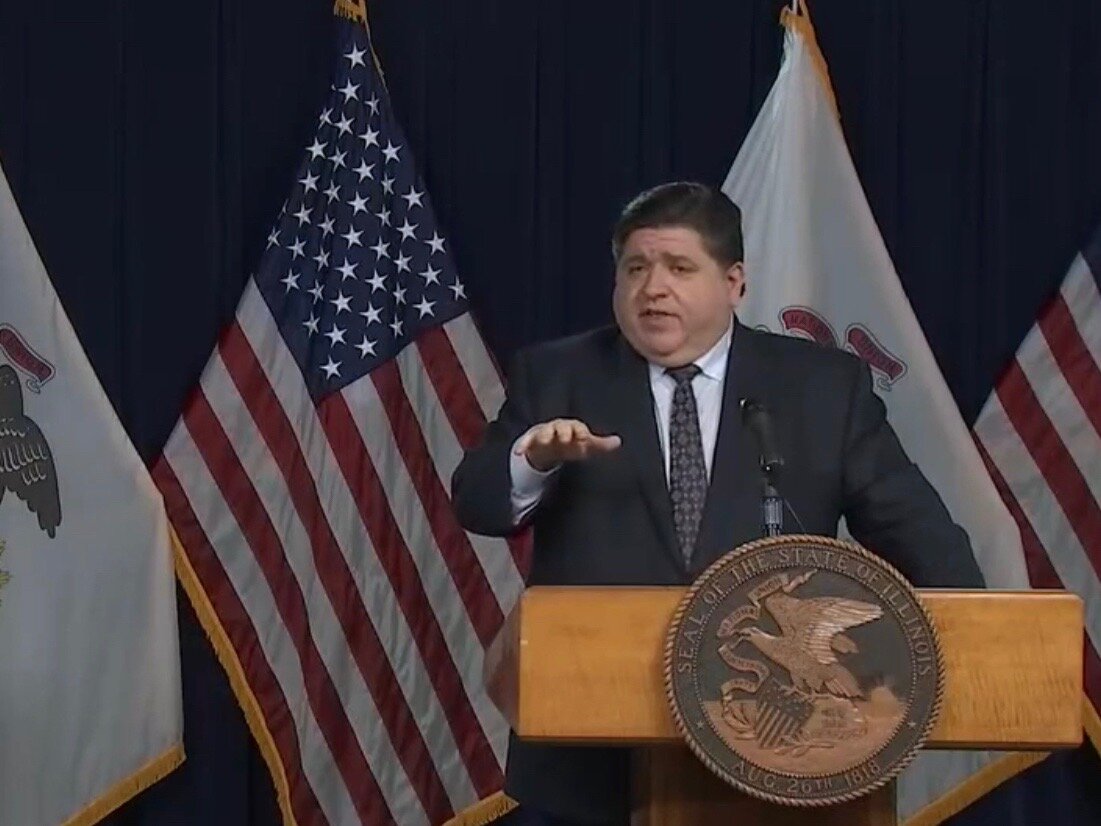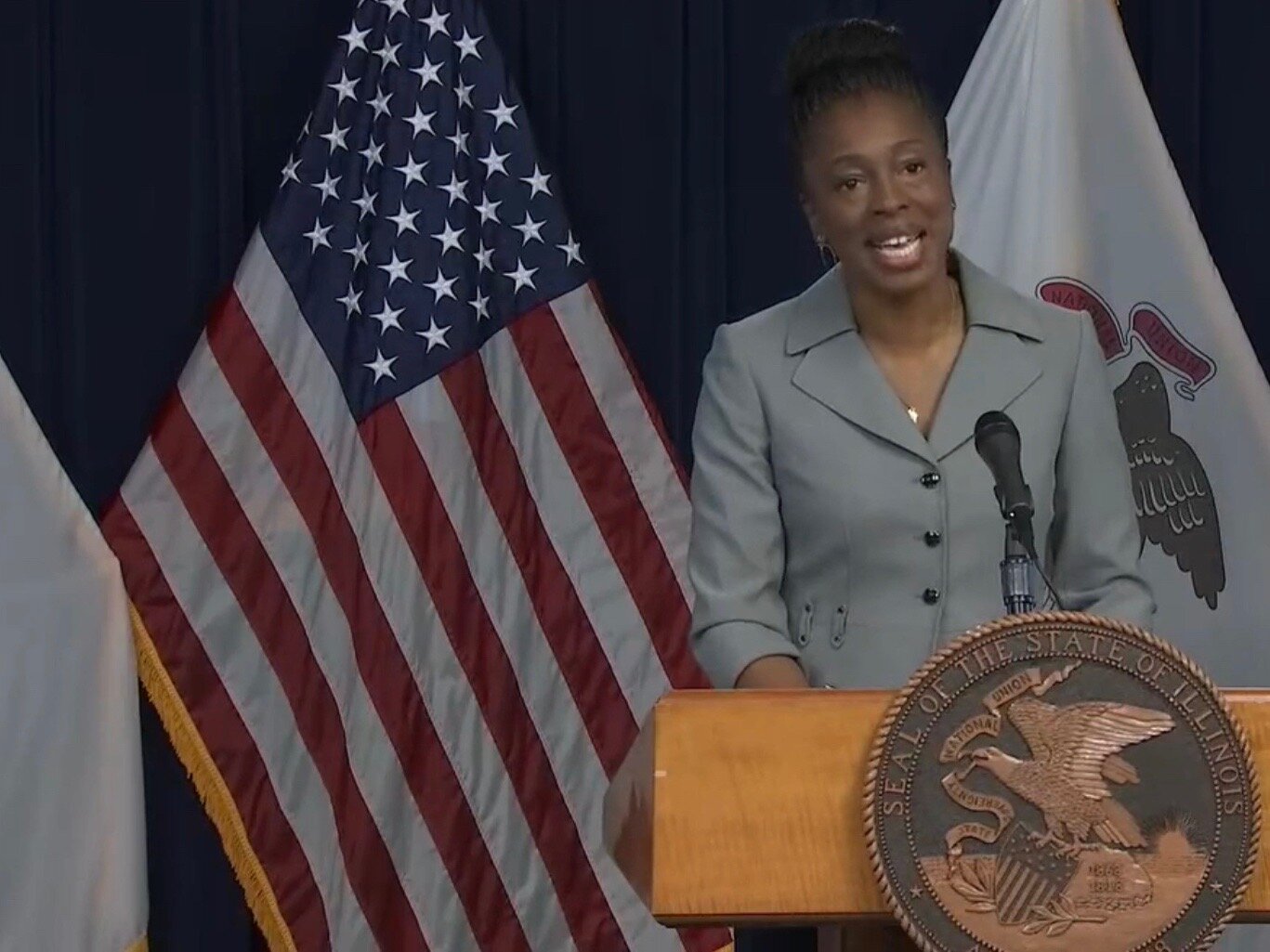Pritzker drops next-phase vaccine age limit to 65
Decision driven by concerns over racial equity; regional tier mitigations could be downgraded Jan. 15
Citing the lower average age of African Americans and Hispanics in COVID-19 deaths, Gov. Pritzker is lowering the age limit for the next phase of vaccinations to 65. (Illinois.gov)
By Ted Cox
Citing concerns over racial disparities in the pandemic, Gov. Pritzker announced Wednesday that the age limit would be lowered to 65 in the next phase of vaccinations for COVID-19.
Speaking at the first coronavirus briefing of the new year at the Thompson Center in Chicago, Pritzker said Phase 1A of the nationwide inoculation program was proceeding in Illinois, with 850,000 frontline health-care workers and residents at long-term-care centers set to receive the vaccine.
According to Pritzker, about a third of eligible health-care workers have received the shots, with some receiving their second and final inoculation just this week.
Looking ahead to the next phase, 1B, the governor said the Centers for Disease Control and Prevention has suggested seniors 75 and older get the shots, along with frontline essential workers, including police officers, firefighters, teachers, postal workers, public-transit workers, and grocery-store employees.
But, calling for an “emphasis on equity” in addressing the racial disparities in the pandemic, Pritzker cited that African Americans and Hispanics had a lower average age in deaths attributed to the coronavirus. White patients lost to COVID-19 had an average age of 81, while African Americans had an average age of 72 and Hispanics 68.
As a result, and along with the Illinois Department of Public Health, Pritzker lowered the age limit on the next phase of vaccinations to 65. That will comprise 1.9 million Illinoisans, along with 1.3 million frontline essential workers across the state.
“I believe our exit plan for this pandemic must, on balance, overcome structural inequalities that have allowed COVID-19 to rage through our most-vulnerable communities,” he said. “Lowering our minimum age for vaccinations in Phase 1B is one critical component in addressing that.”
According to Pritzker, the state has received almost 350,000 doses on COVID-19 vaccine — outside of Chicago, which is getting its own directly — with almost 115,000 set aside for residents at long-term-care centers, to be administered through CVS and Walgreens. More than 200,000 doses have already been administered, but estimates are it could still be months before the initial phase is complete.
“I had hoped to see an increase in the number of vaccines delivered to us,” Pritzker said, instead of the reduction seen under the Trump administration, which has largely left the inoculation process to the states. But the governor said he expects the number of delivered vaccines to increase greatly under the incoming Biden administration after Jan. 20, as it plans to invoke the Defense Production Act to streamline the process — a step President Trump has been reluctant to take.
“My expectation is there will be a lot more delivered to the state of Illinois once the Defense Production Act is invoked,” Pritzker said.
Stating that the goal is to “get this vaccine out to as many people as possible as quickly as possible,” Pritzker said he’d be calling on the Illinois National Guard to help with inoculations as the process widens with the next phase and those that follow.
“We are getting shots into arms, and that is exactly what we need to end this pandemic,” said Public Health Director Dr. Ngozi Ezike.
“We are getting shots into arms, and that is exactly what we need to end this pandemic.”
Dr. Ngozi Ezike (Illinois.gov)
Ezike announced 139 new deaths attributed to the coronavirus Wednesday, pushing the state toll to 17,096. Some 7,569 newly confirmed cases of COVID-19 brought the Illinois total to the brink of a million, at 999,288.
Ezike said the state has not yet detected a case of a more contagious strain of COVID-19 currently afflicting Great Britain. “We haven’t found it,” she said. “That doesn’t mean it’s not here.” She urged Illinoisans to “double down” on mitigation measures such as wearing a mask, washing hands, and maintaining social distancing, saying, “We need to be more vigilant.”
Pritzker said the state had registered “hiccups” in rising infections after the end-of-year holidays, but Illinois had not seen a surge after Thanksgiving, nor thus far after Christmas and New Year’s. He added that he had considered it “unwise to downgrade any region” in the restrictive Tier 3 mitigation measures “while in the holiday season,” but if case levels continued to hold he could begin easing those restrictions Jan. 15.
“We still have a long way to go,” Ezike said, “but we’re definitely on our way.”


